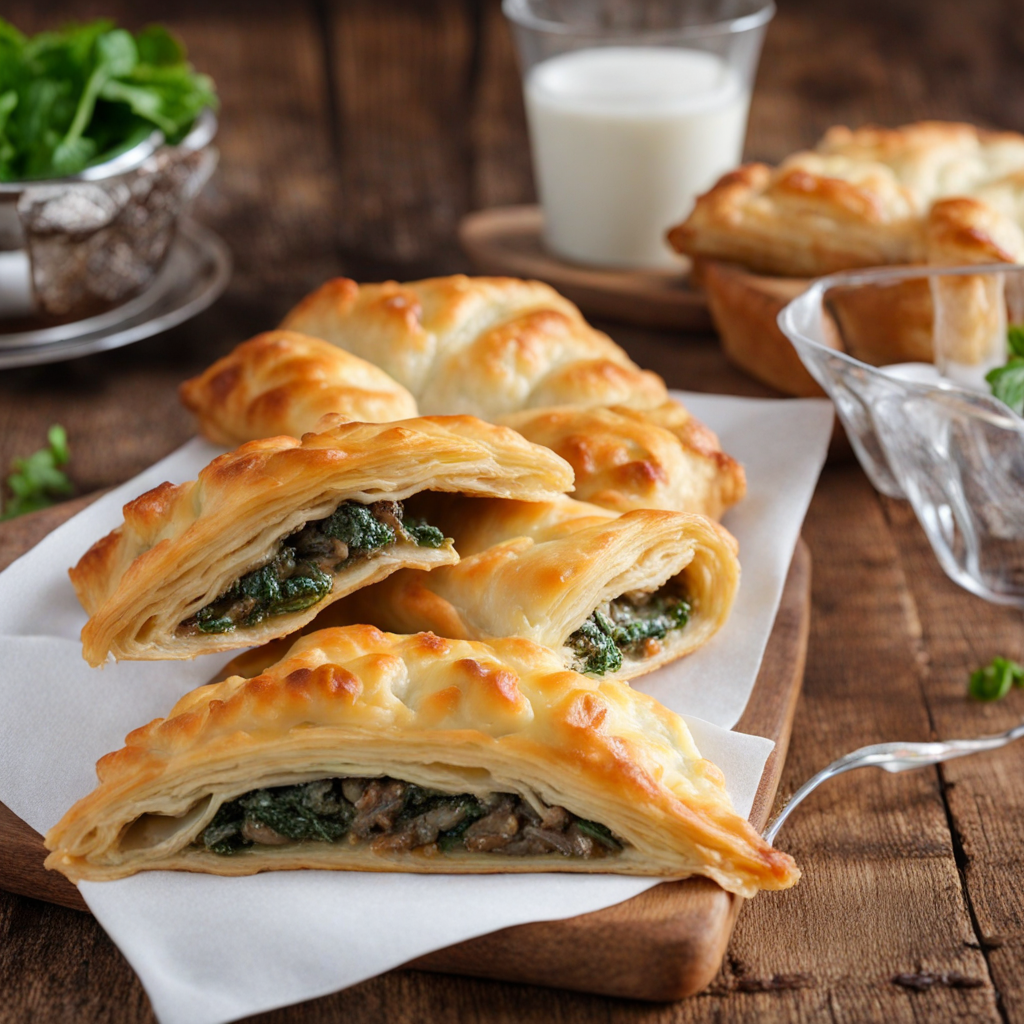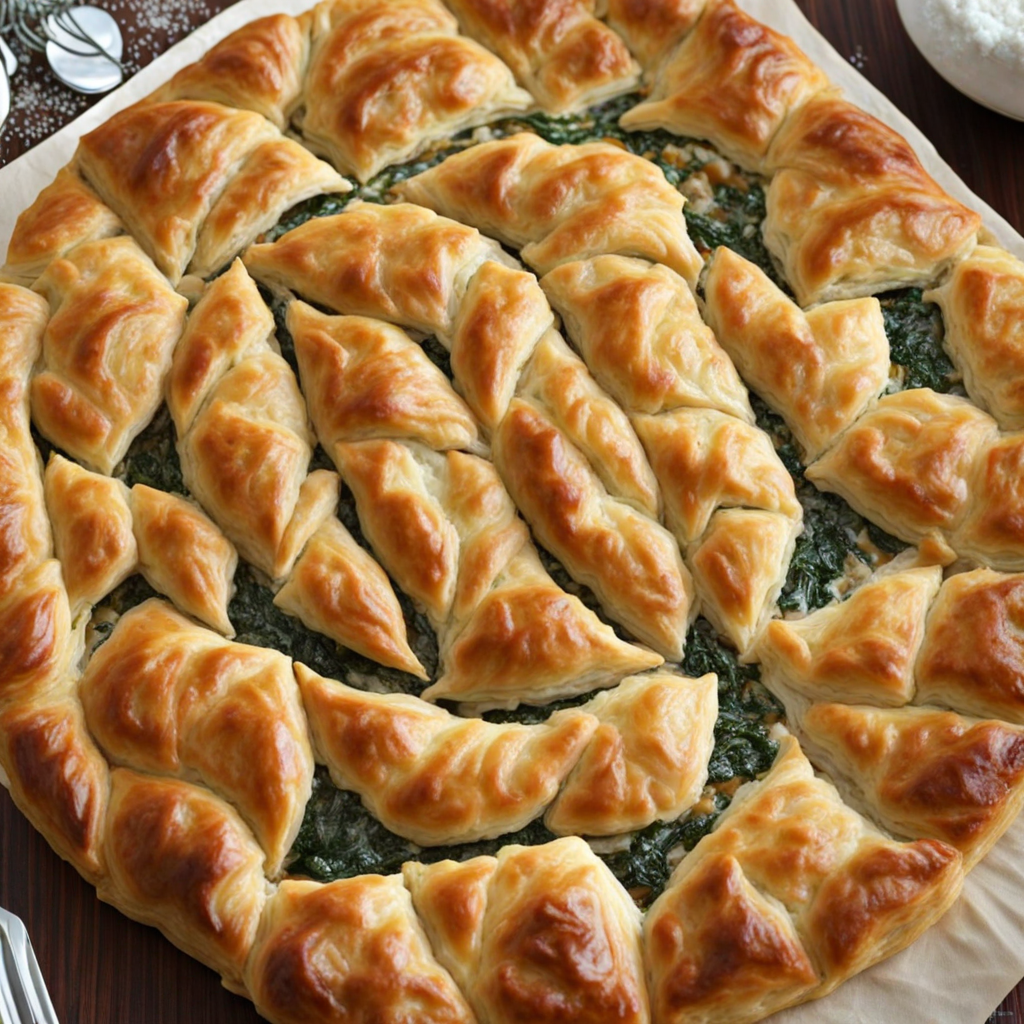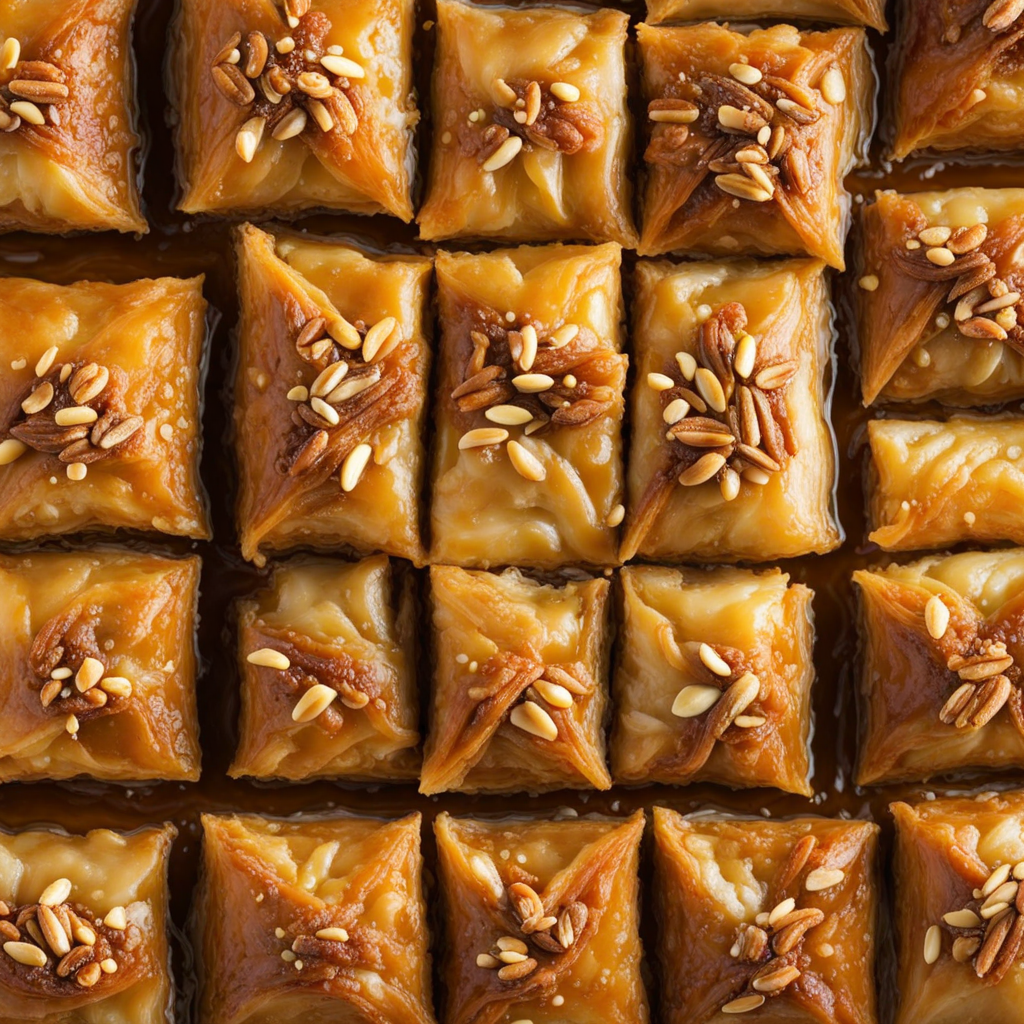Burek
Burek is a savory pastry that embodies the rich culinary tradition of Bosnia and Herzegovina. This delicious dish consists of thin layers of dough, known as phyllo or yufka, which are meticulously rolled and filled with a variety of ingredients, most commonly minced meat, such as beef or lamb, mixed with onions and spices. The pastry is then shaped into a spiral or rolled into a large pie and baked until golden and crispy, creating a delightful contrast between the flaky exterior and the succulent filling. Each bite offers an explosion of flavors, making it a comforting and hearty dish that is perfect for any occasion. The versatility of burek is one of its most appealing aspects. While the classic meat version is widely beloved, variations exist that cater to different tastes. For instance, cheese burek features a creamy mixture of feta or other local cheeses, while spinach burek incorporates fresh greens, providing a lighter yet equally satisfying option. The fillings can be adjusted according to personal preferences, allowing for endless creativity in the kitchen. Regardless of the variation, the common denominator remains the expertly crafted dough, which is essential to achieving the perfect texture. Burek is not only a staple in Bosnian households but also a popular street food, often enjoyed on the go. It is typically served with a side of yogurt or a refreshing salad, enhancing the overall experience. The dish reflects the country's rich history and cultural influences, combining elements from Ottoman, Mediterranean, and Balkan cuisines. For anyone looking to explore a new taste sensation, indulging in a slice of burek will transport you to the heart of Bosnia and Herzegovina, leaving you with a memorable culinary experience that is both satisfying and deeply rooted in tradition.
How It Became This Dish
The History of Бурек: A Culinary Journey Through Bosnia and Herzegovina Origins of Бурек The story of Бурек (burek) begins centuries ago, tracing its roots back to the Ottoman Empire. This savory pastry is believed to have originated in the Middle East or Central Asia, where various forms of filled dough have been crafted for generations. The name “burek” itself is thought to derive from the Turkish word “börek,” which refers to a range of pastries made with thin layers of dough. With the expansion of the Ottoman Empire into the Balkans, especially in the 15th century, this delectable dish made its way into the cultural tapestry of the region, including Bosnia and Herzegovina. The earliest forms of burek were made with a type of dough known as yufka, a thin unleavened flatbread which is similar to phyllo pastry. Initially filled with a mixture of meats, vegetables, or cheese, the dish quickly became popular among different ethnic groups, adapting to local tastes and ingredients. In Bosnia and Herzegovina, this pastry has evolved to become a beloved staple, often enjoyed as a quick snack or a hearty meal. Cultural Significance Burek is more than just food; it embodies the rich history and cultural identity of Bosnia and Herzegovina. Its significance extends beyond the kitchen, serving as a symbol of hospitality and communal gatherings. In Bosnian culture, sharing a plate of burek is an act of friendship and warmth, making it a common feature at family celebrations, weddings, and religious events. Each region has its unique spin on the dish, often leading to friendly rivalries between towns and families over who makes the best burek. The city of Sarajevo, for example, is famous for its thin, flaky crust, while the town of Zenica is known for its rich fillings. Street vendors and local bakeries pride themselves on their unique recipes, often passed down through generations, ensuring that each bite tells a story of tradition and familial love. Burek is not just a food item; it's a cultural artifact that represents the confluence of various influences—Turkish, Mediterranean, and Slavic. This blend is particularly evident in the variety of fillings used. While traditional burek is filled with minced meat, modern iterations may include potatoes, spinach, pumpkin, and even sweet fillings like apples. Development Over Time As Bosnia and Herzegovina navigated its complex history, so too did burek evolve. The 19th and early 20th centuries saw significant changes in the culinary landscape due to social and political shifts. The Austro-Hungarian Empire’s influence introduced new ingredients and cooking methods, leading to various regional adaptations. The introduction of puff pastry and variations using local cheeses became popular, reflecting the dynamic interactions between cultures. The post-World War II era brought further transformations. With the establishment of socialist Yugoslavia, burek became a symbol of national pride. State-run bakeries offered it as an affordable food option, making it accessible to a broader population. This period saw the emergence of standardized recipes, but many families continued to uphold traditional methods, ensuring the dish retained its authentic charm. The Yugoslav Wars of the 1990s brought significant upheaval and a renewed focus on national identity, including food. In the aftermath, there was a resurgence of interest in traditional Bosnian dishes, with burek at the forefront. As people sought comfort in their culinary heritage, the dish became a way to reconnect with one’s roots and preserve cultural memory. In recent years, the globalization of food culture has introduced burek to international audiences. Bosnian diaspora communities have helped to popularize the dish outside of its homeland, particularly in Europe and North America. Restaurants specializing in Balkan cuisine have sprung up, featuring burek as a signature item. Its rise in popularity has led to a wider appreciation of Bosnian culinary traditions, inviting culinary enthusiasts to explore the rich flavors and history associated with this simple yet profound dish. Modern Variations and Innovations Today, burek continues to adapt and thrive, reflecting contemporary culinary trends while honoring its past. Chefs are experimenting with new fillings and techniques, incorporating ingredients like truffles, artisanal cheeses, and organic vegetables. Some modern variations even cater to dietary preferences, offering gluten-free or vegan options, yet still maintaining the essence of the beloved pastry. In Bosnia and Herzegovina, the traditional methods remain highly regarded. Many families still prepare burek from scratch, using hand-rolled dough and fresh ingredients. Community gatherings often involve large batches of burek, with everyone contributing to the preparation process. This communal aspect of cooking highlights the dish's role in fostering connections and preserving shared heritage. Conclusion The history of burek is a testament to the resilience and adaptability of culinary traditions. From its origins in the ancient past to its modern-day status as a beloved comfort food, burek holds a unique place in the hearts of those in Bosnia and Herzegovina and beyond. It is a dish that encapsulates the spirit of community, hospitality, and cultural identity, inviting everyone to partake in its rich narrative. Whether enjoyed in a bustling street market, a family kitchen, or a trendy restaurant, each bite of burek carries with it the flavors of history and the warmth of shared moments. As it continues to evolve, this traditional dish remains a delicious reminder of the interconnectedness of cultures and the enduring power of food to bring people together.
You may like
Discover local flavors from Bosnia And Herzegovina







